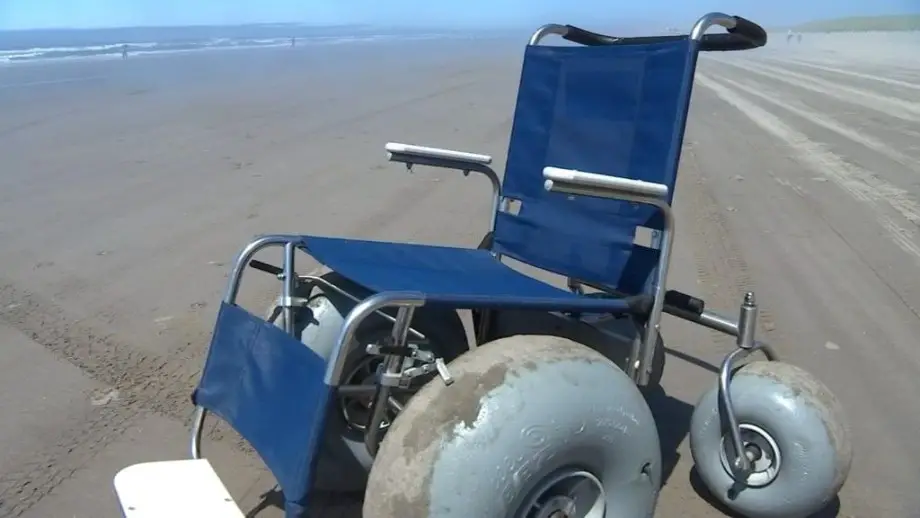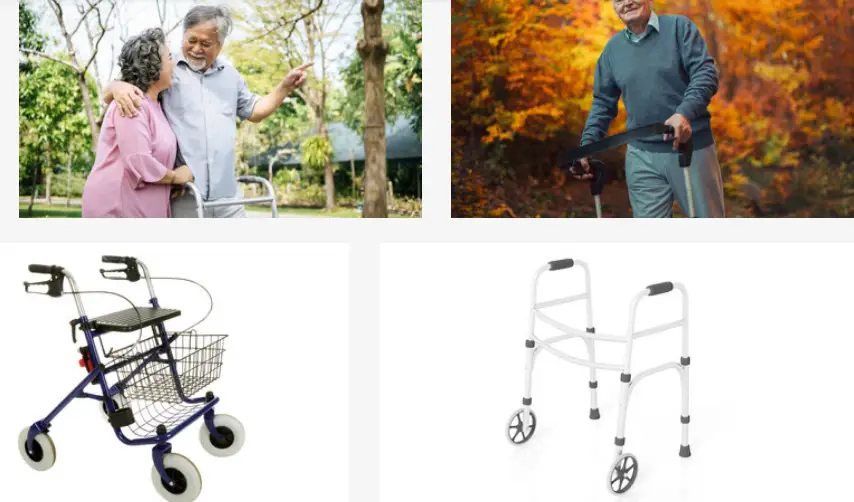Over the years, there has been an ongoing debate about a power wheelchair being the same or having the same functionality as a scooter.
As a matter of fact, most people use them interchangeably when talking about mobility devices.
However, these devices are different from each other, especially when it comes to usage.
Although both are designed to assist people with limited mobility, they serve different purposes.
If you’re indecisive about choosing between a power wheelchair and a scooter for your mobility, this article is the perfect guide you need.
Here, we shall be explaining the differences between the two devices, their pros and cons, and the right one to select when purchasing a walking aid or mobility device.
Table of Contents
- What is a Power Wheelchair?
- What is a Scooter?
- Final Verdict
What is a Power Wheelchair?
A power wheelchair (popularly called a power chair) is a mobility device often used by people with limited mobility or medical conditions. It is a mobile device designed for long-term use, especially for people unable to use power scooters or manual wheelchairs.

Power wheelchairs users are typically dependent on them for their daily activities. As such, they spend more time on it to perform various tasks. It’s a major reason the chair has many functions and features to regularly assist its user(s).
Related: Best Mobility Aids Walkers for Easy Movement
Components of a Power Wheelchair
Seat
Power wheelchairs come in different seat designs based on the users’ needs or preferences. For example, you can pick between a slung seat and a padded seat. It all depends on the type you’re comfortable with.
Frame
The frame of a power wheelchair can either be rigid or flexible. The hard frame is quite difficult to transport, while the flexible frame is foldable and can be carried from one place to another after removing the battery.
Joystick
All power wheelchairs have a joystick that enables the user to control the device’s movement.
Other features include 4 to 6 wheels, adjustable footrest, USB charger, safety horn, seat belt, shock-absorbing tires, and padded cushion.
Pros of a Power Wheelchair
User-friendly and customizable
Power wheelchairs are easy to operate and do not require rigorous upper bodywork.
They are equally customizable, offering you custom options that suit your needs and budget.
Multiple power seating functions
You tilt the seat, move it into a standing position, elevate, and recline it. It all depends on your needs and preferences.
This feature helps you change position, rest and even gives you a great level of independence when performing certain tasks or functions.
Ideal for those with serious disabilities
Due to the power wheelchair functionality level, it is perfect for those with severe medical conditions or serious disabilities like muscle spasms and stiffness, tremors, dizziness, walking difficulties, and seizures.
Easy maneuverability
Apart from being ideal for indoor usage, power wheelchairs are easy to maneuver, convenient, and can pass through small or narrow spaces.
This unique feature is due to its zero turning radius, enabling users to effortlessly use it indoor to pass through small spaces or corners.
Adaptability to rough terrains
Power wheelchairs designed for outdoor usage can easily pass through tough or rough places without hassles.
Related: Electric Wheelchair Pros and Cons
Cons of a Power Wheelchair
Requires regular maintenance
Since you are more likely to use it daily, it requires frequent maintenance and inspection to enable it to last longer.
Users must also charge it regularly since batteries power it. Doing this will ensure that it serves its purpose and meets your needs.
Hard to transport
The size of an individual often determines the size of the chair; therefore, a large power wheelchair might require hitches, wheelchair-accessible vehicles, or lifts to transport it from one place to another successfully.
The only exception is when using the foldable power wheelchair that is more flexible and easy to transport once the battery is removed.
Relatively expensive
The price of a power wheelchair is relatively higher than most mobility devices, including a scooter. However, it makes up for this cost with its excellent features easily customized for users’ convenience.
What is a Scooter?

Just as its name implies, a scooter is a mobility device designed like a scooter to move people who have limited mobility from one place to another. It’s commonly used by older people unable to walk long distances.
Unlike the power wheelchair, the scooter is not a wheelchair and is often not used for medical purposes.
It is basically a mobility device that helps to provide convenience to those who are unable to travel or walk long distances like shopping for groceries, visiting amusement parks, among other activities.
It is the ideal device for people who have less serious mobility issues and can comfortably move their hands or upper body to operate the device.
Related: Best Mobility Aids for Cars
Components of a Scooter
The mobility scooter doesn’t have many features and is not customizable like the power wheelchair. However, some core features of a scooter include; swivel seat or chair, storage basket, 3 or 4 tires, handlebar, tiller, anti-top frame, and so on.
Pros of a Scooter
Best for outdoor usage
Unlike the power wheelchairs ideal for indoor usage, scooters are perfect for outdoor usage and can travel long distances. They are equally user-friendly and straightforward to use.
Quite affordable
Scooters are less expensive. They are quite affordable as opposed to power wheelchairs.
Diverse types
Scooters come in different models, types, colors, and designs. They also range from 3 to 4 wheels. It all depends on your preference.
Cons of a Scooter
Requires good upper body power
Unlike the power wheelchair requiring less hand movement to operate, scooters require good upper body power/strength and agility to stir and operate the handlebars and tiller.
Poor maneuverability
A scooter requires more space to maneuver or navigate any place. It’s why it has a larger turn radius due to its long body and design.
Final Verdict
From what has been discussed so far about power wheelchairs and scooters, it will be easy to finally decide the best mobility device for you.
Both devices have their functionalities and pretty much serve the same purpose but in different ways.
If you can’t walk long distances without getting tired easily, a scooter is a good choice.
But if you have other underlying medical conditions that make it difficult for you to walk or move freely, then a power wheelchair is highly recommended after adequate consultation with your doctor.




